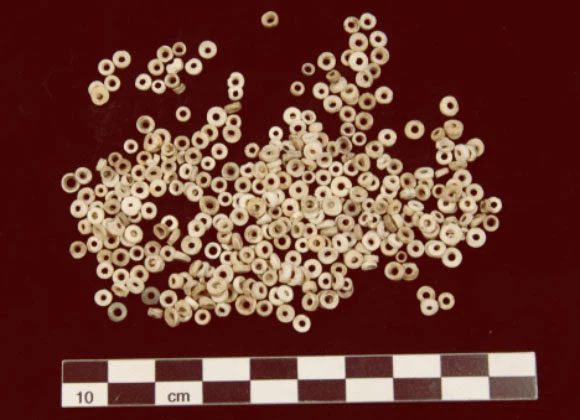The Chumash Native Americans have been producing shell beads for thousands of years in the Santa Barbara Channel region, with specific production sites clearly documented. Archaeologists specializing in this area suggest that money made from shell beads was originally used about 800 years ago.
Professor Lynn Gamble from the Department of Anthropology at the University of California, Santa Barbara, proposes that the use of shell money began approximately 1,000 years earlier than previously thought in California, meaning the use of bead money dates back around 2,000 years.
She stated, “If the Chumash Native Americans used bead strings as money 2,000 years ago, this would change our understanding of hunter-gatherers as well as the complexity of their economic and social political structures.”
“This could be the earliest example of money used anywhere in the Americas at this time.”

Shell beads as money appeared much earlier than previously thought.
Professor Gamble argues that archaeologists should use four criteria to assess whether the beads were used as currency or jewelry: First, shell beads used as currency would be utilized more frequently than beads for decorative purposes; highly standardized beads could be considered currency; larger, more visually striking beads are often used for decoration; and currency beads are widely distributed.
She explained, “I compare the shell beads that have been recognized by archaeologists in California as currency for over 40 years with another type that is widely distributed.”
“They were also traded throughout California and beyond. Through surveying, measuring, and comparing standards among different types of beads, it is clear that these could be currency beads and appeared much earlier than we previously thought.”
“We know that from the early days of contact with Europeans, Native Americans in California traded various goods, including food,” Professor Gamble said. “The use of shell beads certainly facilitated this extensive exchange network.”




















































